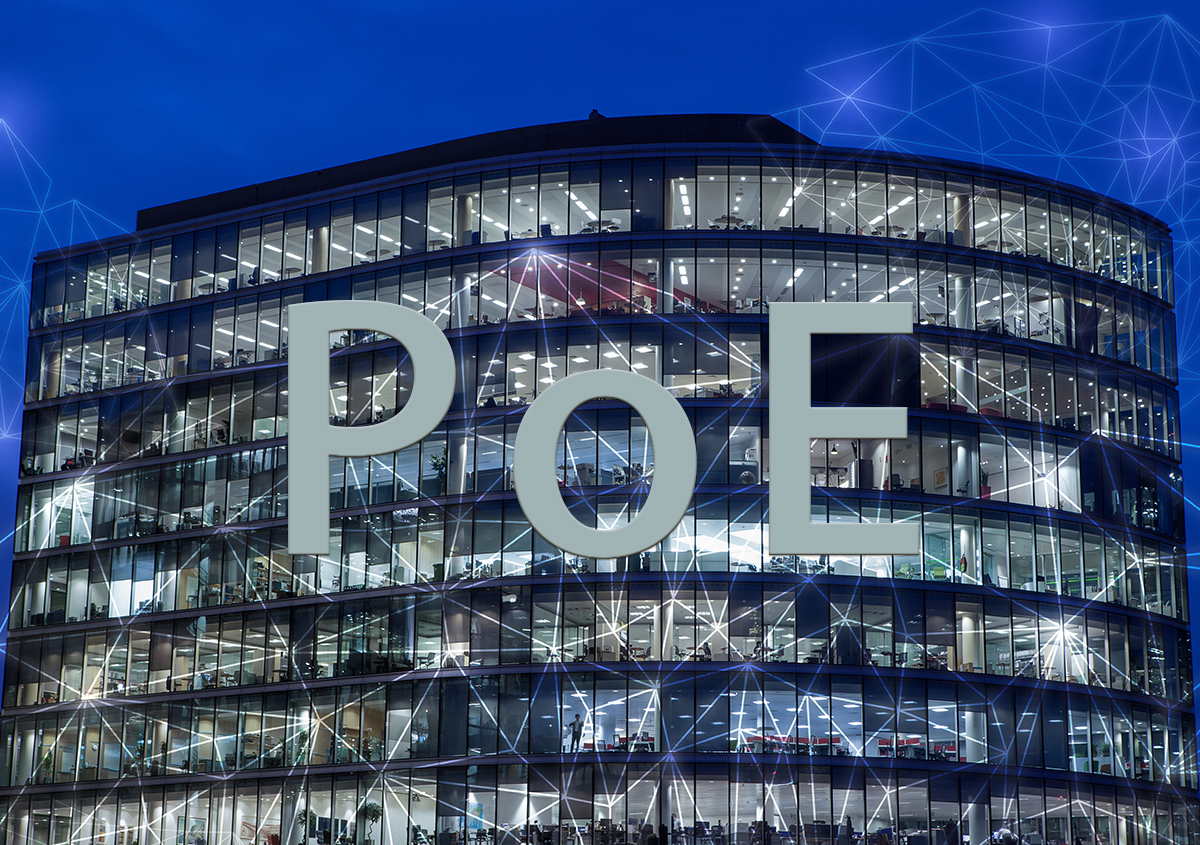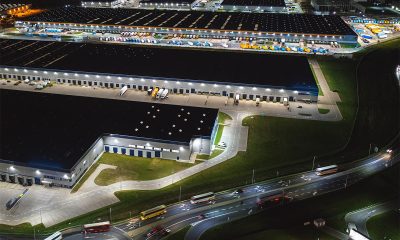Power over Ethernet (PoE) is a networking technology that offers the ability to deliver both low voltage DC power and data over a standard Ethernet cable. This ability drives the consolidation of low voltage DC powered devices onto a single Internet Protocol (IP) network. A PoE system converts the line-voltage AC power to specific DC power, then transmitting the power to connected devices over structured cabling. An Ethernet twisted-pair Ethernet is designed to transport a differential signal, its anti-phase design (180° out of phase with each other) allows the transfer of data and power through a single Ethernet cable without interfering with each other.
The proliferation of IP-connected network devices has been driving the need for high-bandwidth communication. While wireless networks provide flexibility, scalability, and ease of installation, they need to overcome the bandwidth and security challenges. With data transmission rates that can exceed 1 Gigabit per second, the PoE network provides guaranteed bandwidth for the secure data delivery.
A PoE system is comprised of the power sourcing equipment (PSE), which is the LAN switch or source power delivered over Ethernet, and the powered device (PD), which is the connected device receiving the power. The system configuration is determined by where the PSE is located.
In an end-span PoE solution, the PSE is built into the Ethernet switch port and the power travels the length of the circuit. In a midspan PoE solution, a power injector sits between an existing Ethernet switch, regardless of its ability to support PoE, and the PD. Power is injected into the Ethernet cable between the PSE and the PD. The midspan power injector may be a single-port device or multi-port device.
PSEs and PDs are categorized as Type 1, Type 2, Type 3 or Type 4. PSEs and PDs that operate within IEEE 802.3af limits belong the Type 1 category. They provide up to 15.4W or draw up to 12.95W of power, respectively. PSEs and PDs following the specifications in IEEE 802.3at (2009) can provide up to 30W or draw up to 25.5W, respectively. IEEE 802.3bt (2018) defines Type 3 and Type 4 PSEs that supply up to 60W and 100W, respectively. PDs that support the IEEE 802.3bt applications allows to draw up to 51W and 71W, respectively.
An Ethernet cable, which is typically made of eight insulated copper wires arranged in four twisted pairs, is also assigned a Category (Cat 5e, 6, 6a, or 7) that correspond to its data handling capacity.
A PoE network can accommodate a wide variety of powered devices, which include, but not limited to, VoIP phones, video cameras, wireless access points, building access control, fire detection systems, IP speakers, PoS terminals, LED luminaires, smart building sensors, and other industrial and building automation systems and devices.
LED technology is at the heart of monumental shift in the lighting industry with respect to smart, connected, and sustainable lighting. The potential of LED lighting can only be unlocked when lighting control is migrated to IP-based network infrastructure. Connected lighting resides at the intersection of the Internet of Things (IoT) and digital lighting. The introduction of PoE as the backbone for connected LED lighting systems opens a plethora of value propositions to drive higher energy efficiency and environmental satisfaction in commercial, institutional and industrial facilities. Technically, LEDs need to be DC-driven. PoE lighting eliminates the need for AC-DC power conversion, which simplifies LED system design and reduces power losses. The wired IP connectivity provided by PoE networks overcomes the challenges of delivering interoperability, security and reliability to connected lighting.
The PoE platform transforms LED luminaires into smart, digital nodes. A PoE light is an individually addressable PD with plug-and-play capabilities provided by a standard RJ45 connector. It incorporates processing capabilities, firmware and connectivity to enable seamless communication, contextual services and data sharing between the smart powered devices. Digital networking on the PoE platform allows control zones to be implemented via software addressed to individual LED luminaires or groups of LED luminaires.
By harnessing the power of the Internet of Things, PoE lights can be controlled from IP-based devices or programmed to respond to data from other PoE-enabled sensors, building automation systems, and online services.



















Loading...